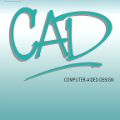In computer-aided diagnosis (CAD) focused on microscopy, denoising improves the quality of image analysis. In general, the accuracy of this process may depend both on the experience of the microscopist and on the equipment sensitivity and specificity. A medical image could be corrupted by both intrinsic noise, due to the device limitations, and, by extrinsic signal perturbations during image acquisition. Nowadays, CAD deep learning applications pre-process images with image denoising models to reinforce learning and prediction. In this work, an innovative and lightweight deep multiscale convolutional encoder-decoder neural network is proposed. Specifically, the encoder uses deterministic mapping to map features into a hidden representation. Then, the latent representation is rebuilt to generate the reconstructed denoised image. Residual learning strategies are used to improve and accelerate the training process using skip connections in bridging across convolutional and deconvolutional layers. The proposed model reaches on average 38.38 of PSNR and 0.98 of SSIM on a test set of 57458 images overcoming state-of-the-art models in the same application domain
翻译:在计算机辅助诊断(CAD)中,计算机辅助诊断(CAD)侧重于显微镜,拆除后可以提高图像分析的质量。一般而言,这一过程的准确性可能取决于微镜学家的经验以及设备敏感性和特殊性。由于装置的局限性,医学图像可能因内在噪音而腐蚀,而在获取图像期间,通过外传信号干扰而腐蚀。现在,CAD深度学习应用程序预处理图像,带有图像分解模型,以加强学习和预测。在这项工作中,提出了一个创新和轻巧的多层深层共振动编码-脱coder神经网络。具体来说,编码器利用确定性图绘制特征图绘制隐藏的图象。然后,重建潜在图象以产生经过改造的脱色图像。利用残余学习战略改进和加速培训进程,利用在跨革命和分流层的连接中跳过连接的连接连接。拟议模型以PSNR平均38和SSIM平均0.98为基础,SIM用于57458图像测试集的57458幅图集取代了同一应用域的状态模型。





